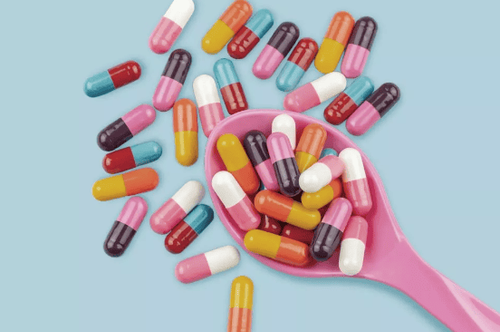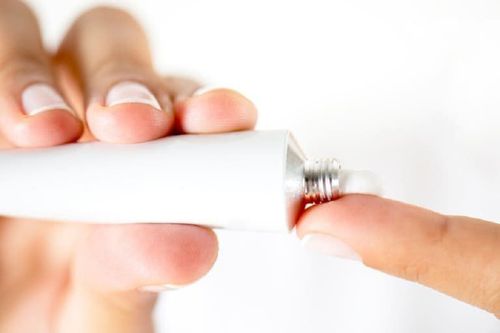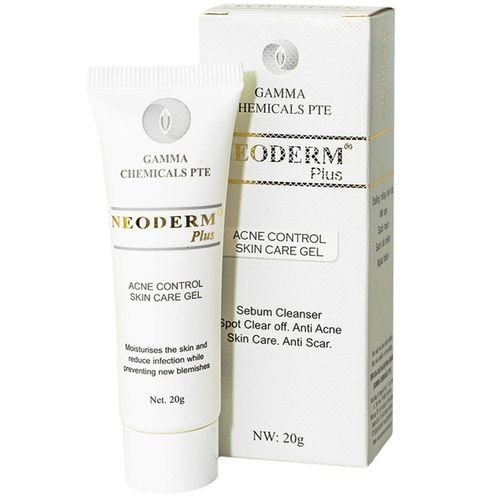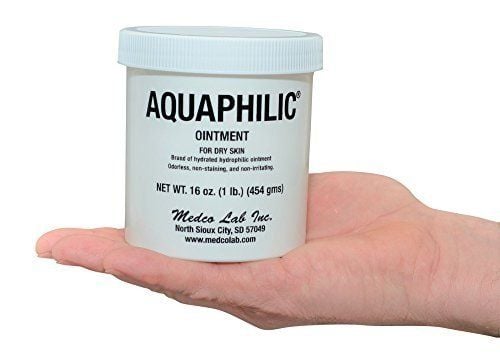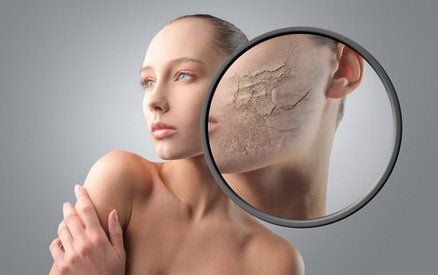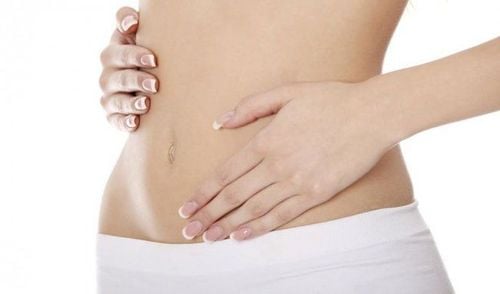This is an automatically translated article.
Acne is common in about 85% of teenagers aged 12-24 due to clogged pores and sebum on the skin. The two most common types of acne are blackheads and whiteheads. This article will learn about these two types of acne.
1. How are blackheads and whiteheads formed? Acne is a skin condition that is more common in teenagers, but it can appear at any age. Acne occurs when the hair follicles become clogged with sebum on the skin. If left untreated, inflammation or a bacterial infection can lead to inflammatory acne.
Whiteheads and blackheads are both considered acne and usually appear on the back, shoulders, and face. Although both types of acne occur when the pore becomes clogged with dead skin cells and oil, there are some differences that need to be distinguished, namely:
Whiteheads are small white bumps that appear dermatophytosis, which occurs when clogged pores are closed, with no exposure to air. Blackheads are small black dots on the skin that occur when a pore is clogged but still open and the hair follicle is exposed to air. As a result, melanin oxidizes and turns clogged pores black. Whiteheads and blackheads do not cause any negative symptoms beyond their appearance. They are not painful unless the acne is advanced and the skin is inflamed with bacteria hiding underneath.
2. Why do blackheads and whiteheads appear? The main causes of blackheads and whiteheads are:
Overproduction of sebum by the sebaceous glands under the skin: Sometimes changes in hormone levels can cause these glands to produce more sebum than the body needs. skin clogs pores. At the same time, the skin often sheds the top layer of dead cells. These skin cells can clog your pores, causing blockages that prevent sebum from reaching the surface. There are many myths about what causes acne, including poor diet, stress, and dirt. While these factors may be contributing factors to worsening acne, they are not the direct cause of your blackheads or whiteheads.
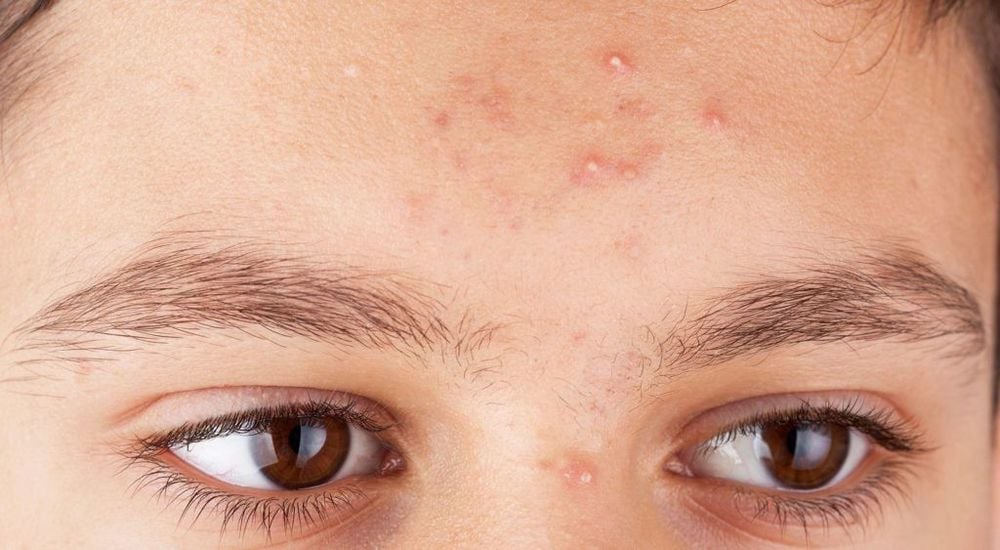
Mụn đầu trắng và mụn đầu đen đều được coi là mụn trứng cá
3. What are the stages of blackheads and whiteheads? In a few cases, whiteheads appear first and then the skin opens. At this point, the oil in the skin is exposed to the air and causes the oil to darken through a process called oxidation that forms blackheads. In addition, the process of forming whiteheads and blackheads can also occur separately, depending on whether your pores are open or closed when they are blocked.
White and blackheads can remain on your skin without causing other problems. However, if sebum and bacteria build up under your skin, an infection can occur leading to inflammatory acne.
4. How to treat blackheads and whiteheads? While an unhealthy diet doesn't cause whiteheads and blackheads, it can make your condition worse. Avoiding processed and high-sugar foods can reduce the number of breakouts you experience.
Precautionary measures will help prevent future breakouts and help clear skin more quickly. Specifically:
Avoid touching your face and do not pick or squeeze blackheads and whiteheads; Do not wash your face too thoroughly. Opt for oil-free skin care products; Manage stress and maintain a good exercise regimen. Mild acne, including whiteheads and blackheads, can be easily treated with over-the-counter moisturizers and cleansers. If your acne doesn't improve or gets worse with these products, talk to your doctor about other options. They can refer you to a dermatologist for a more specialized treatment plan, which includes:
Prescription medications: These may include oral antibiotics to clear up the infection and other oral medications that are prescribed. Designed to treat acne from within. Your dermatologist can also help you with prescription skin care that contains higher doses of the active ingredients found in over-the-counter products. Dermatological treatments: For severe conditions, your doctor may recommend laser or light treatments to speed up the healing process. These treatments primarily help fade acne scars, but they can also help prevent future breakouts.
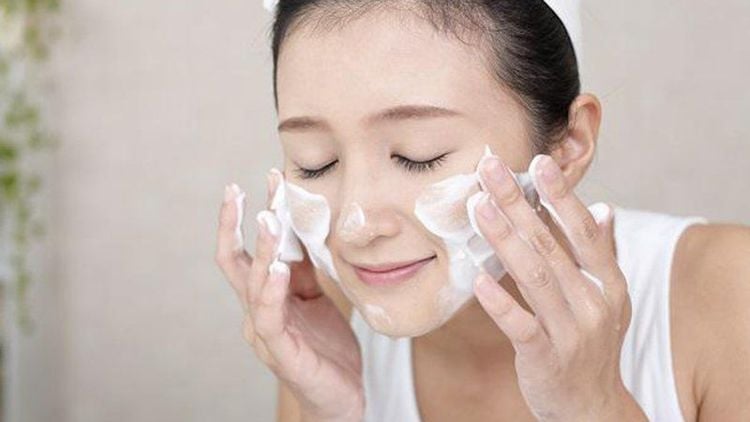
Bước đầu tiên để giúp ngăn ngừa mụn đầu trắng là đảm bảo bạn thường xuyên rửa mặt
5. Method to prevent blackheads and whiteheads 5.1. Whitehead Prevention The first step to helping prevent whiteheads is to make sure you wash your face regularly. Washing your face once in the morning and at night is enough to keep your face clean from bacteria and oil. If you exercise or are active during the day, you may need to wash your face more often. For on-the-go cleaning, bring wipes with you.
Avoid touching your face, because when you come into contact with many surfaces throughout the day, your hands can accumulate dirt, bacteria that enter the pores.
Ultimately, you want to maintain a balanced diet filled with low glycemic carbohydrates, good fats, and plenty of protein to support healthy skin. Foods with antioxidants, such as kale and berries, help nourish your skin and prevent acne.
5.2. Blackhead Prevention To help prevent blackheads, it's a good idea to implement a care routine for oily skin types that focuses on removing excess oil, dirt, and dead skin (the three main causes of blackheads). .
Start by washing your face twice daily with a cleanser containing Salicylic Acid. This specific cleanser helps remove dirt and oil from your pores, so it's known to be effective at preventing blackheads.
Every week, take care of your skin with masks and scrubs. Clay or charcoal masks help remove excess oil and deep clean pores, while scrubs help remove dead skin from the face.
If you notice your face is oily during the day, carry a washcloth in your bag to remove excess oil.
Both white and blackheads are formed by bacteria, dead skin, sebum that clogs and irritates the pores. You should stick with your acne treatment and don't be discouraged when you see them pop up all of a sudden because it can take months to see the desired results with treatment.
References: healthline.com, medicinenet.com, biore.com




